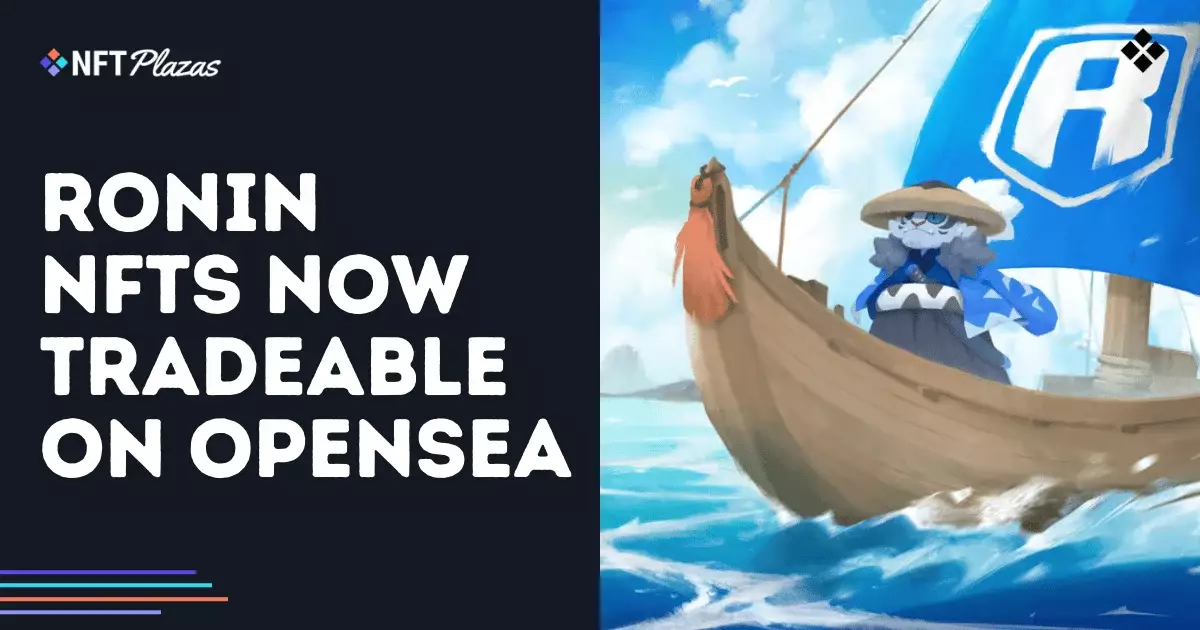The recent integration of NFTs minted on the Ronin blockchain with OpenSea marks a monumental milestone that may well redefine the NFT market dynamics. As Ronin Wallet users now gain access to OpenSea’s extensive marketplace—one of the most significant platforms in the NFT realm—it’s hard not to view this as a watershed moment for both creators and collectors alike. This ambitious move reflects a trend towards broader accessibility in digital asset trading, potentially ushering in an era where even casual creators can engage with cryptocurrency and blockchain technology without the intimidating barrier of technical know-how.
A Step Towards Decentralized Creativity
Critics often argue that the technology behind NFTs can obscure rather than empower potential creators. However, the advent of OpenSea Studio offers a refreshing counter-narrative, presenting a no-code platform that seeks to democratize NFT creation on the Ronin network. This is a powerful tool for burgeoning artists and creators who might otherwise shy away from a space that has historically favored the tech-savvy. By eliminating the necessity for coding expertise, Ronin is putting the power back in the hands of the creators, representing a more inclusive approach within the digital asset ecosystem.
Broader Market Access and the Winner Takes All Dilemma
Before this integration, Ronin NFTs were restricted mainly to the in-network marketplace, limiting their potential exposure. The leap to OpenSea not only broadens trading avenues but also enhances liquidity, raising questions about the emergence of winner-takes-all dynamics. As collections now compete in a larger ecosystem, the survival of the fittest principle becomes even more pronounced. While this may spell great opportunities for certain NFTs, it could also mean that less popular collections risk fading into obscurity—exposed not only to more competition but also to a more discerning consumer base operating in an expansive market.
Revenue Streams and Sustainability: A Double-Edged Sword
Sky Mavis’s arrangement wherein 8% of OpenSea’s fees from Ronin NFT transactions go toward the Ronin Treasury raises vital questions about sustainability in the NFT ecosystem. While this setup is aimed at providing long-term funding for network growth, it also places a degree of dependency on the performance of the larger marketplace. What happens when market trends fluctuate, and fees dwindle? There’s a looming threat that fluctuating revenues may undermine the sustainability of the Ronin network, exposing it to the uncertainties that come with project and market volatility, particularly in the fast-paced NFT space.
Royalty Enforcement: A Necessary Compromise
OpenSea’s bifurcated approach to royalty enforcement could be seen as either a clever strategic move or a glaring oversight. By honoring royalties on newer token standards but sidelining older models, it reflects a deeper divide within the NFT community over ownership rights and revenue sharing. Sky Mavis recognizes this issue and is reportedly planning to align enforcement across platforms. Nevertheless, the initial discrepancy raises concerns that could reflect broader tensions between technological advancement and historical precedent in the NFT world.
While the integration of Ronin with OpenSea opens the door for creators and collectors alike, it is accompanied by potential pitfalls and ethical dilemmas that deserve to be critically examined. This evolving landscape could either propel the NFT sector towards unprecedented heights or leave less-known projects languishing in obscurity.
















Leave a Reply